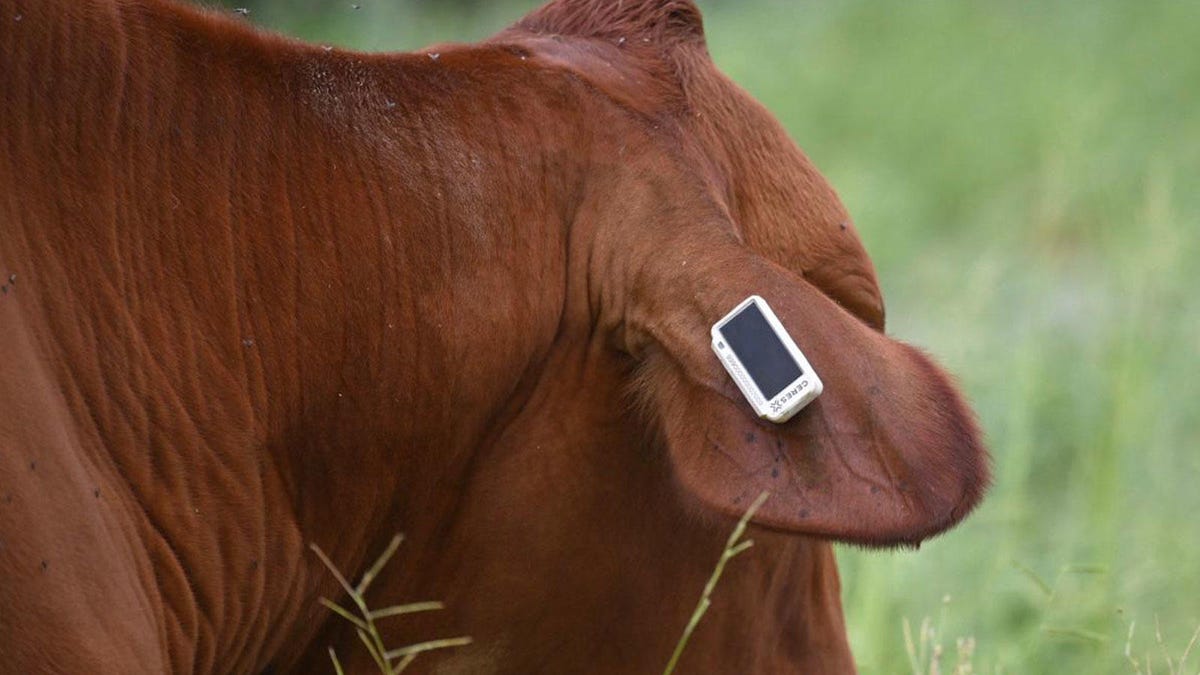
Brisbane’s Ceres Tag has developed an animal monitoring platform using satellite technology to extend the cloud into rural Australia.
The idea for Ceres Tag was born from a passion for animals and the future of the agriculture industry, founder and CEO David Smith told the Amazon Web Services (AWS) Summit Online Australia and New Zealand on Wednesday.
“On 4,000 square kilometres, you can appreciate we don’t get visibility of our animals like you might on a small farm,” Sarah Cook, station manager at Aileron added. “We’ll drive past the animals occasionally, and we’ll make assumptions, but I just feel like there’s so much more that we can discover and ways that we can grow and become better at what we do.”
Smith grew up on a property in the Hunter Valley. He wanted to put his experience as an engineer to use back home, saying he wanted to do something about the underutilisation of data in the agriculture industry.
Specifically, he said, the problems that needed solving were: Where are the cattle? How many were there? And what condition are they in?
What resulted was a solution that uses tags attached to animals, that within minutes, send data from the tag via satellite, directly down to ground stations, through the AWS Cloud, and back to the farmer.
“The farmer is then able to utilise that information, not just for on-farm solutions, but also for things like finance and insurance,” Smith said.
“When we started the journey, a lot of people told us that it would be impossible to do. And it was funny, as we went along the journey, how technology caught up with us.”
Ceres Tag has involved CSIRO in the process to ensure that the tag design takes the health and long-term impact of the animal into account.
The Ceres Tag solution requires a full constellation of low Earth orbit satellites in order to work. The data travels from the satellite to the ground station and then there’s an ingestion and parsing process that occurs before the data is stored in an AWS IoT database. There are also some APIs to manage the ingestion into the Ceres Tag management system which sits on AWS Infrastructure.
“We’ve managed to secure it really effectively with Amazon Cognito and also we use the Amazon RDS encrypted at rest database as well,” Ceres Tag data platform manager Heidi Perrett added.
Putting IoT sensors on animals in a rural setting is an extremely difficult device problem. A range of issues needed to be addressed, from the safe application of devices to animals, through to the power and connectivity issues associated with locations that have little or no communications infrastructure.


The first iteration of Ceres Tag was a lot larger than it is today, and Perrett said it was full of issues, such as its weight. The startup has since also made improvements to the actual embedded systems in the tag.
“We have a unique battery chemistry, but we also have some intelligent power management to be able to make sure that we get the most out of our battery and our solar panel while also maintaining that data transmission rate,” she said.
“We have quite an extensive API set up. We did find that we had to shore up some access issues in our API. We’re really glad that we got that done before we released.”
Ceres Tag has further products under development, not just for livestock, expanding its reach into areas such as wildlife as well as companion animals.
“If we’re really going to feed the world with 10 billion people with the assets that we have, the only way we will do that is if we start adopting technology more,” Smith said. “But all the way along the supply chain, no matter whether you’re a breeder, a backgrounder, a feed lighter, processor, a financier, an insurer, the information that Ceres Tag provides you is that securitisation of information, that certainty that gives you confidence every time you make a decision.
“And when you do that for such a broad set of customers along a supply chain is when you start to see whole societal change.”
READ MORE
CSIRO’s Data61 and Ceres Tag to develop smart satellite-linked pet tracking collar
The collar will use Bluetooth technology and satellite communications to track and locate your animal companions in real time.
WWF-Indonesia using machine learning to save critically endangered orangutans
World Wildlife Fund for Nature Indonesia has turned to AWS to speed up orangutan conservation efforts.
Murdoch University scientists develop grid-system drone technique to survey dugongs
Scientists from Murdoch University believe small drones could be the solution to making marine conservation more accessible and affordable.






















